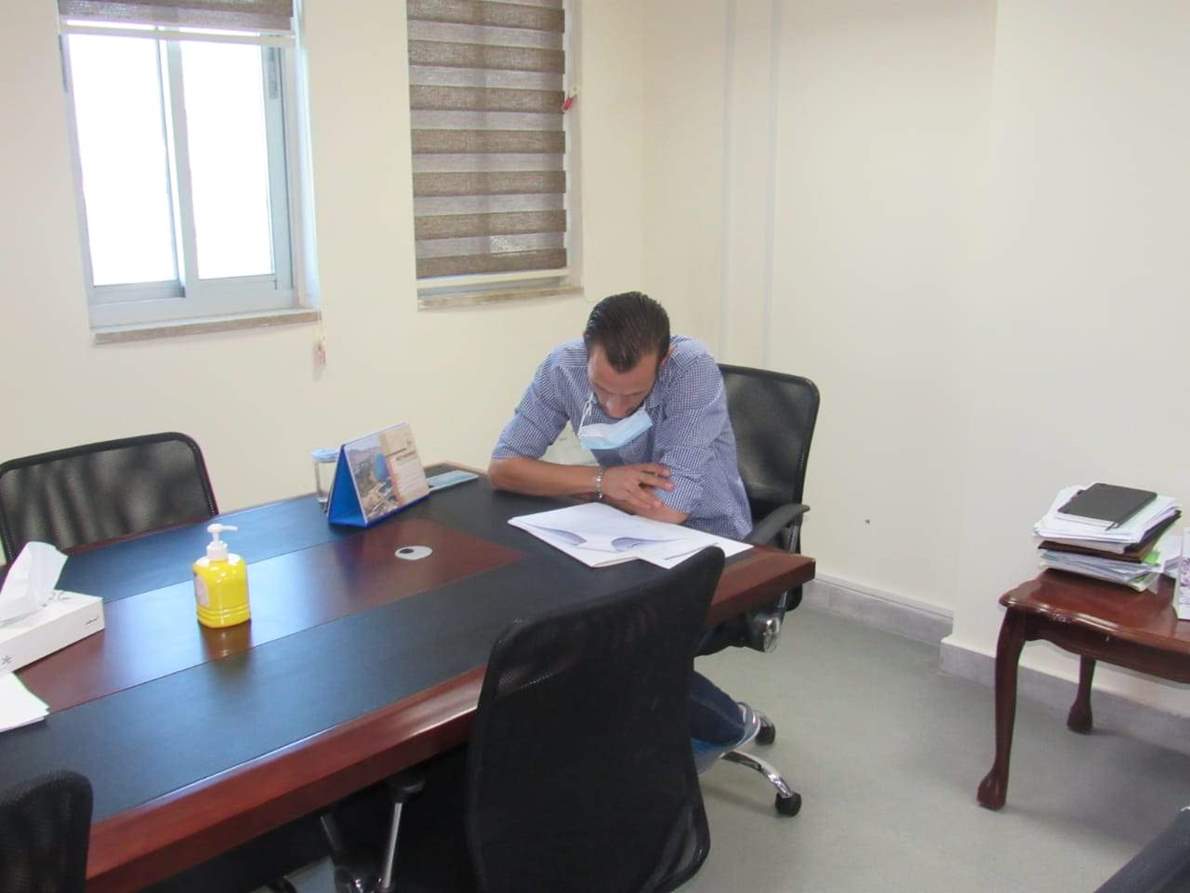The
Higher Council for the Rights of Persons with Disabilities (HCD) held an exam for the accreditation of sign language translators
on Saturday.
اضافة اعلان
Those who pass the exam will obtain a certified
sign language translation certificate.
 Jordanians take the HCD exam for sign language accreditation on August 7, 2021. (Photos: Handouts from HCD)
Jordanians take the HCD exam for sign language accreditation on August 7, 2021. (Photos: Handouts from HCD)
Ghadeer Al Hares, assistant secretary general
for technical affairs at HCD, said in a phone interview with
Jordan News that
25 applicants sat for the exam — five males and twenty females — with
varied educational levels.
“First launched in 2010, the exam takes place
annually to advance and improve the quality of sign language translation,
especially in vital sectors like translation at courts, universities, and
hospitals, as well as translation to doctors or deaf students in different
educational institutions,” Hares added.
Hares emphasized that the exam also aims at promoting
the rights of persons with hearing disabilities to effective communication and efficient
translation.
“Similar to spoken language translation, sign
language translation observes a set of criteria such as translation quality and
precision to convey the meaning of sign language words accurately,” explained
Hares.
Hares said that a committee chaired by a deaf
person and composed of four deaf people and four experts in sign language
translation will assess the performers.
According to Hares, the exam consists of two parts,
theoretical and practical. The theoretical part aims at evaluating the
applicants’ skills in sign language translation and measuring their general
knowledge in different areas including the culture of deaf people, the
Law on the Rights of Persons with Disabilities, the Convention on the Rights of
Persons with Disabilities, the ethics of the sign language translation
profession, and the professional guide for sign language translators.
On the other hand, the practical part comprises
translation from sign language to spoken language and vice versa, translation
from sign language to written language, interpretation of several social topics,
as well as general dialogue in which the applicants are asked to introduce
themselves using sign language.
Hares said that applicants should be holders of
a general secondary education certificate or its equivalent, be at least 18
years old, have passed the third level of sign language training or received 120
training hours, and have had a minimum of two years’ experience in sign
language communication.
“Sign language is like any other language,
either you use it or you lose it. That is why we require applicants to have experience,”
added Hares.
Hares noted that no experience is required if
the applicant has one or more deaf first degree relatives.
Hares said that the applicant should pass both parts,
theoretical and practical, in order to obtain the certificate and be
accredited.
“The results for the practical exam are
calculated according to the models developed for this purpose,” she said. “The mean
score of the models is then calculated for each applicant.”
“Clarity of meaning, facial expressions, and
body language, are some factors to be considered in the assessment of the
applicants,” Hares added.
Hares said that within two weeks of the
examination date, the results will be announced with the names of those who
passed the exam in both parts on the website and on the council's social media
accounts.
Marwa Al-Gezawi, one of the applicants, told
Jordan
News that the main reason why she took the exam was to help deaf people in
Jordan.
“My father is deaf, so I have used sign
language since I was a child,” Gezawi added.
“The exam went smoothly, I am 80 percent sure
that I will pass,” she said. “If so, I am planning to apply for jobs in
government departments and public and private institutions.”
Read more National



